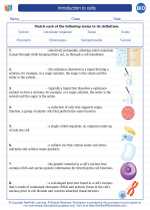Testes
The testes are the primary male reproductive organs responsible for producing sperm and the hormone testosterone. They are located outside the body in the scrotum, which helps regulate the temperature of the testes for optimal sperm production.
Anatomy of the Testes
The testes are composed of seminiferous tubules, where sperm is produced, and interstitial cells (Leydig cells), which produce testosterone. The network of tubules is responsible for the production of sperm through a process called spermatogenesis.
Functions of the Testes
- Sperm Production: The testes produce and store sperm in the seminiferous tubules, which is essential for male fertility.
- Testosterone Production: The interstitial cells within the testes secrete testosterone, a hormone that is responsible for the development of male secondary sexual characteristics, such as facial hair, deepening of the voice, and muscle mass.
Regulation of Testicular Function
The production of sperm and testosterone in the testes is regulated by hormones released from the pituitary gland and the hypothalamus in the brain. These hormones stimulate the testes to produce sperm and testosterone.
Common Disorders of the Testes
Several disorders can affect the testes, including:
- Testicular Cancer: Abnormal growth of cells in the testes, which can be detected through self-examination or medical screening.
- Testicular Torsion: An emergency condition where the testis rotates, cutting off its blood supply, which requires immediate medical attention.
- Testicular Trauma: Injury to the testes, which can result in swelling, pain, and potential long-term complications.
Study Guide
To understand the topic of testes thoroughly, it is essential to focus on the following key points:
- Describe the anatomy of the testes, including the structure of the seminiferous tubules and the interstitial cells.
- Explain the process of spermatogenesis and the production of testosterone in the testes.
- Discuss the role of the testes in male reproduction and the regulation of testicular function by hormones.
- Identify common disorders that affect the testes and their potential impact on male health.
By mastering these key points, you will have a comprehensive understanding of the structure, function, and significance of the testes in the male reproductive system.
.◂Biology Worksheets and Study Guides High School. Introduction to cells
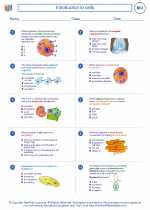
 Worksheet/Answer key
Worksheet/Answer key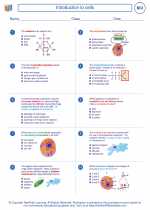
 Worksheet/Answer key
Worksheet/Answer key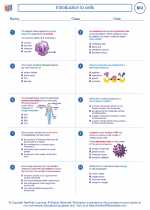
 Vocabulary/Answer key
Vocabulary/Answer key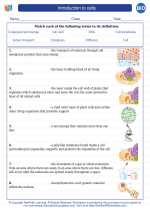
 Vocabulary/Answer key
Vocabulary/Answer key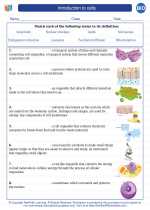
 Vocabulary/Answer key
Vocabulary/Answer key
 Vocabulary/Answer key
Vocabulary/Answer key